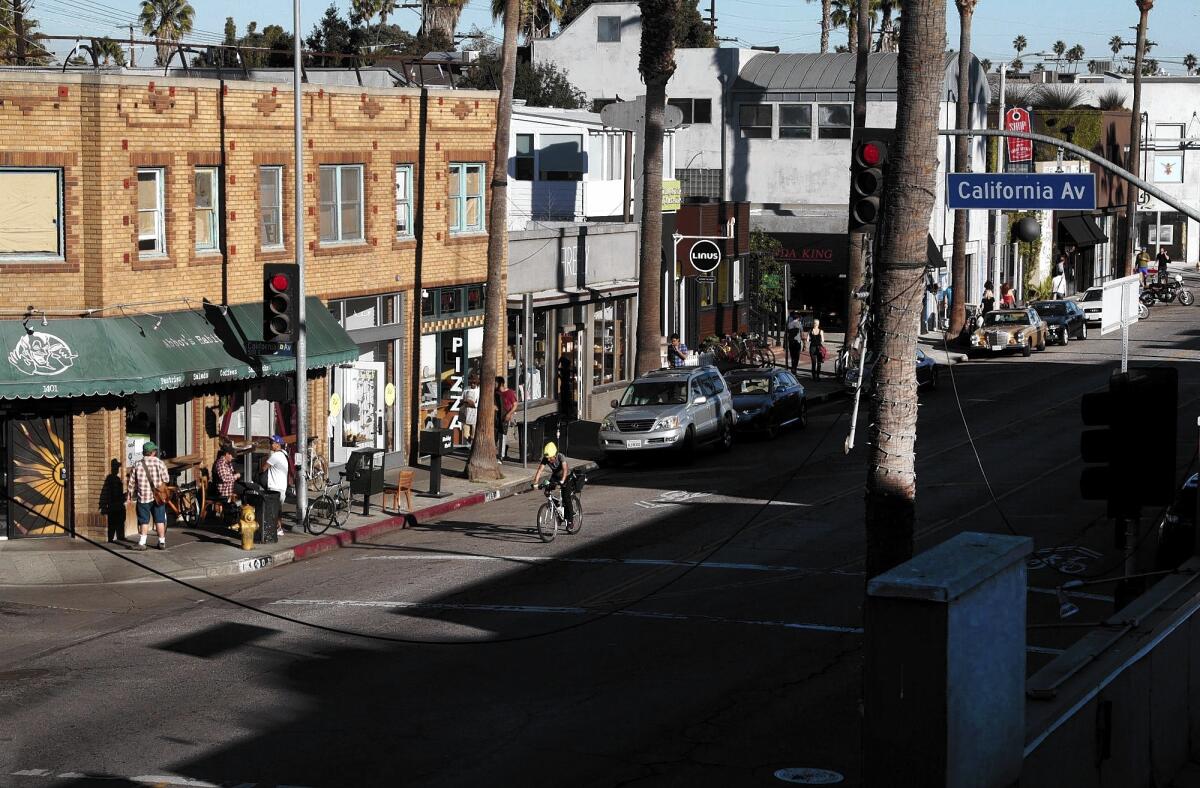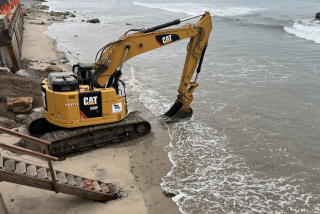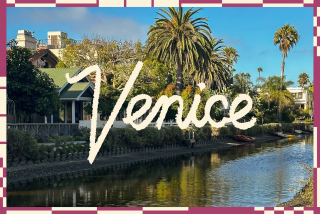Venice looks to take more control over its development

It takes tenacity to build condos, restaurants or offices in Venice — and not just because congestion-weary residents in the beachside community tend to chime in with objections to projects large and small.
The real challenge is that developers, and often even residents wanting to add on to single-family homes, must answer to two masters. The city of Los Angeles and the California Coastal Commission both have jurisdiction over development, including parking, in the coastal zone.
“You’re subject to scrutiny twice,” said Frank Murphy, who has developed dozens of condos and apartments in Venice since 1979. “You have to prepare for two sets of hearings and have your staff present the material twice. It increases the cost, the timeline and the uncertainty.”
Seeking to streamline the permitting process and to give residents and local officials more control, Venice is taking its first steps toward developing a local coastal “program” or plan. Once such a plan is completed and certified by the Coastal Commission, developers would apply only to the city for permits. But opponents could still appeal projects to the Coastal Commission.
The effort is in its infancy and funding has not yet been fully identified, but recently elected Los Angeles City Councilman Mike Bonin, who represents Venice, said he was making it a priority. His aim, he said, is to get “Venice out from under the thumb of the Coastal Commission.”
Coastal panel officials say the action is overdue.
“It’s a long time coming,” said Jack Ainsworth, Coastal Commission senior deputy director. “The city should take that responsibility on. The commission should not be in the permitting business.”
The California Coastal Act, enacted in the 1970s, required the state’s 76 coastal cities and counties to develop land-use plans, known officially as local coastal programs. The idea was for local governments to set the ground rules for future development and protection of coastal resources, in concert with the Coastal Commission.
Many of the coastal counties and cities chose to divide their jurisdictions, resulting in 128 separate local coastal program areas. Statewide to date, 92 of those have been certified by the Coastal Commission.
The city of Los Angeles delineated six areas, none of which has yet put forth a plan. In addition to Venice, the L.A. areas are Pacific Palisades, Playa Vista, Del Rey Lagoon, LAX/El Segundo Dunes and San Pedro. (Under Councilwoman Ruth Galanter, Venice came close to completing a local coastal program more than a decade ago, but redistricting changed her turf, and city planners “had other priorities,” Bonin said.)
The need for coastal land-use planning is greater than ever, given sea-level rise and climate change, said Warner Chabot, coordinator of Act Coastal, a coalition of environmental groups. With Eric Garcetti as mayor and Bonin on the council, he said, “you now have more progressive, decisive political leadership saying that this type of land-use planning is long overdue.”
As for what has taken Los Angeles so long, Chabot has a theory. “The city has many different fiefdoms within local government, and none were willing to get together and work cooperatively,” Chabot said. The dual permitting system “imposed a far greater burden on residents and property owners than anywhere else along the coast, but there never seemed to be enough of a grass-roots political momentum to demand that the different jurisdictions work together.”
Just as Venice is finally revving up to devise a local coastal program, funding issues loom.
In 2013, the Legislature proposed $3 million a year for the Coastal Commission to update or amend more than 50 incomplete or outdated plans. Lawmakers also earmarked an additional $1 million that the commission could award as grants to local governments to work on local coastal programs. Los Angeles recently received a $100,000 grant.
Gov. Jerry Brown supported the effort for a year, stipulating that the coastal panel would then have to justify the need for continued funding. The commission hired 20 staff members and evaluated the status of all local coastal programs.
This month, Brown’s draft 2014 budget discontinued the $3 million in annual funding. Coastal panel staff members were meeting with finance officials to make the case for more funds in the budget’s May revision.
“Our plea to the governor and the Legislature is to reinstate the money so that the California Coastal Commission can partner with local governments,” Chabot said. “Without that, it’s very unlikely that we’ll make much progress.”
Twitter: @MarthaGroves
More to Read
Sign up for Essential California
The most important California stories and recommendations in your inbox every morning.
You may occasionally receive promotional content from the Los Angeles Times.










